It was late December. Too early to really enjoy the sorts of snow that Mt. Mokoto offers later in the season. We were in eastern Hokkaido though, so we decided to head up in the hopes of getting a good view of Lake Kussharo. The promise of a cosy night in the new hut also appealed.
It quickly became clear that we wouldn’t be able to summit on the first day. All of Hokkaido was being buffeted by strong winds caused by a large, slow-moving low-pressure system. So instead of going up the summit ridge, we opted for the more sheltered valley, starting at the campground. We ascended up the valley and cut north towards the hut across the head of the valley, over the northeastern ridge at around 900m (as per the route map below).
In good weather, it would be better to climb up from the pass, along the eastern ridge (as indicated in the route map above). This summit ridge provides epic views all the way to the top of Mt. Mokoto.
Our route up the valley took us through stands of gorgeous black pines, onward up to patches of stunted white birch. Being early in the season, the snow surface was crusty, with sasa bamboo still visible.
At around 800m in altitude, the taller trees gave way to creeping pine and truly icy and varied surfaces. It was tough going without ski crampons, with ski edges only just purchasing the surface as we traversed across to a relatively flat spot on the northeastern ridge of the valley.
Once on the other side of the ridge, we skidded and slid our way down to the hut, first through thick brush and then into a more open slope. With better snow conditions, this would have been a glorious blast down to the hut. With the conditions as they were, however, this did not feel like a beginner-friendly route.
Once at the hut, we set about settling in for the night. First on the task list was to get into the hut. Later in the season it would be a big job to dig down 2m of snow to the front entrance, so the only option would be to clamber through the second-story window. Since we were there in late December, we only had to clear a small amount of snow from the front door.
The windows are boarded up for winter, so I had to remove the one from the front door. The board was held on with 10mm nuts and bolts. After some infuriating few minutes trying to loosen off the nuts, I realized that the threads had ice in them. Heating the nuts up with a lighter meant I could remove the nuts by hand. We now had access to the hut.
Haidee also started on clearing the snow from the door of the bio-toilet. Later in the season I doubt it would be worth the effort. The Hokkaido Yukiyama Guidebook has a photo on p. 430 which shows the toilet building buried to the eaves in snow.
While we didn’t discover it till the next morning, there is also a fresh spring about 10 meters from the front door of the hut. In mid-winter, this spring will likely be buried under 2m of snow, so you’ll have to decide whether it is worth digging it out or just melting snow on the hut’s excellent little pot-belly stove.
Fairly high on the priority list after gaining access to the hut was getting the pot-belly coal stove running. Don’t be put off by its diminutive size. The hut appears to be insulated, so that little stove heats the hut very quickly.
To get the coal stove in the Mt. Mokoto Ginreiso Hut running, follow these steps:
- First, check the chimney outside to make sure it is not iced up or blocked with snow.
- Next, back inside, make sure to clear out any ash from the stove from previous users. There is an ash bucket and small shovels in the hut for this.
- Open up all the vents as well as the chimney damper at the back of the stove, just under the flue at the top of the stove.
- Put some paper or a fire-lighter on the grate in the stove, and pile on some kindling.
- Shovel a few scoops of coal on top of all this.
- Return the stove-top plate, and light the paper from under the grate.
All going well, this should result in a roaring fire. Adjust the heat using the grates on the front of the stove as well as the flue damper at the back of the stove under the flue. The flue damper was the most effective for turning down the heat – with that open the stove would just run full-bore, getting red hot.
Once all the necessary preparations were done, we settled in for the night. Dinner was spinach and mushroom pasta sauce with wholegrain pasta. With cell coverage at the hut, we used the remaining time in the evening to learn a new card game, gin rummy.
The next morning broke to precisely what the weather forecast had predicted: clear skies and little to no wind. After a quick breakfast of porridge, cleaning up the hut, and returning the window boards to their original places, we set off for the summit of Mt. Mokoto. Looking back towards the hut we could see out towards the Abashiri coast.
We more or less just followed the summer trail to the summit, which led us through stunningly atmospheric woods.
The route eventually ends up at a small saddle before climbing steeply about 10 meters up to the summit of Mt. Mokoto. We dropped our packs and left our skis for the last clamber up to the summit. The views were picture perfect.
After lingering at the summit, we started our descent back down to the campground. Later in the season and in stable snow conditions, it would be fine to head straight down into the campground valley from the saddle just below the summit. The skiing would be fantastic.
For us, however, we wanted to avoid the early-season ice and lurking creeping pines, so we headed down the eastern summit ridge for a few hundred meters before cutting down the valley towards the campground. That summit ridge is really something else – such amazing views across to Lake Kussharo and east towards the Shiretoko Peninsula.
We passed a couple on snowshoes, and another skier as we descended. Mt. Mokoto seems to be a popular place when the skies are clear.
We finally made it back to the campground at around 11am. From here we would drive the 3 hours or so to Asahidake Onsen. We were hoping for good weather there too, so we could experience Hokkaido’s highest mountain – Mt. Asahidake – in good conditions.










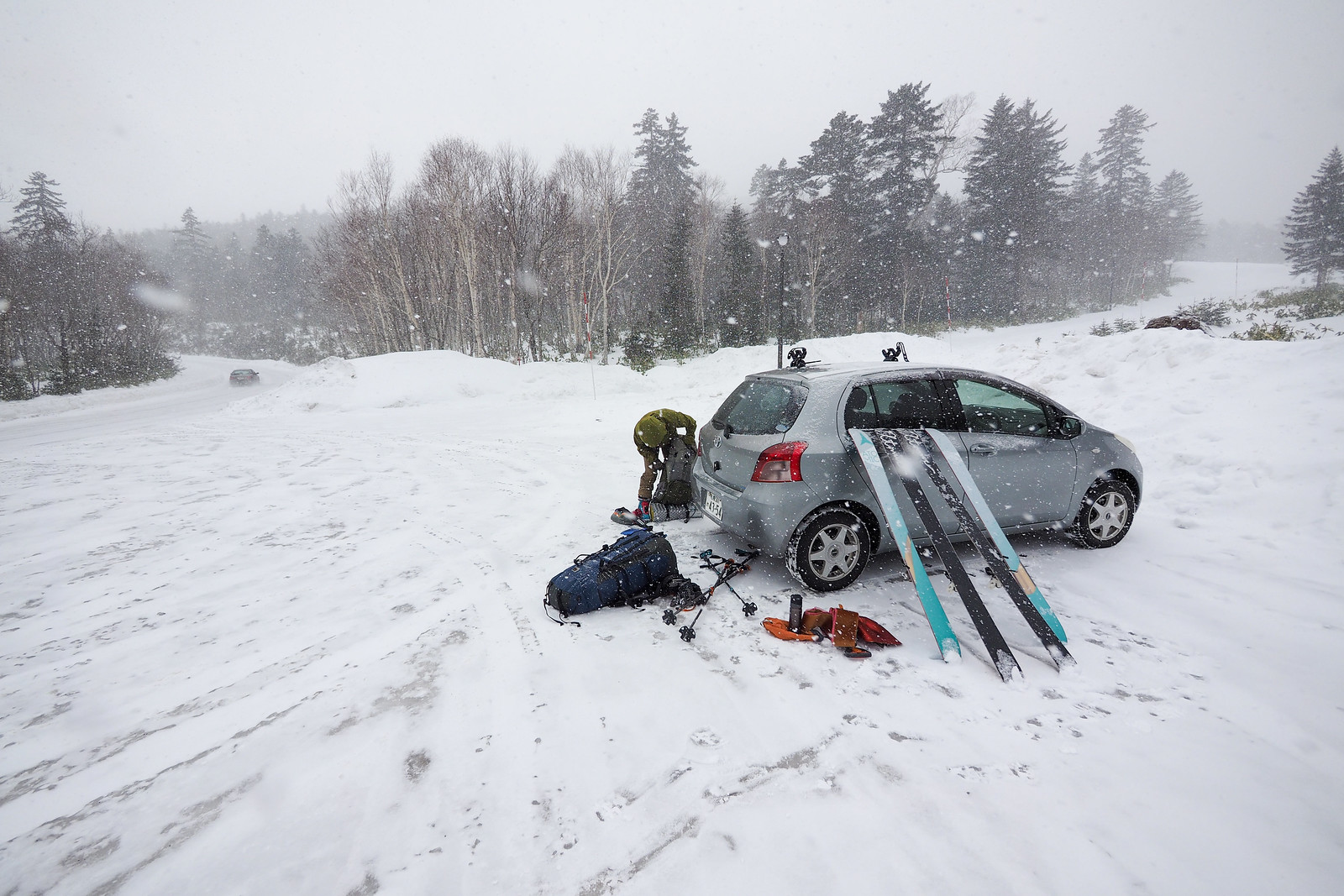
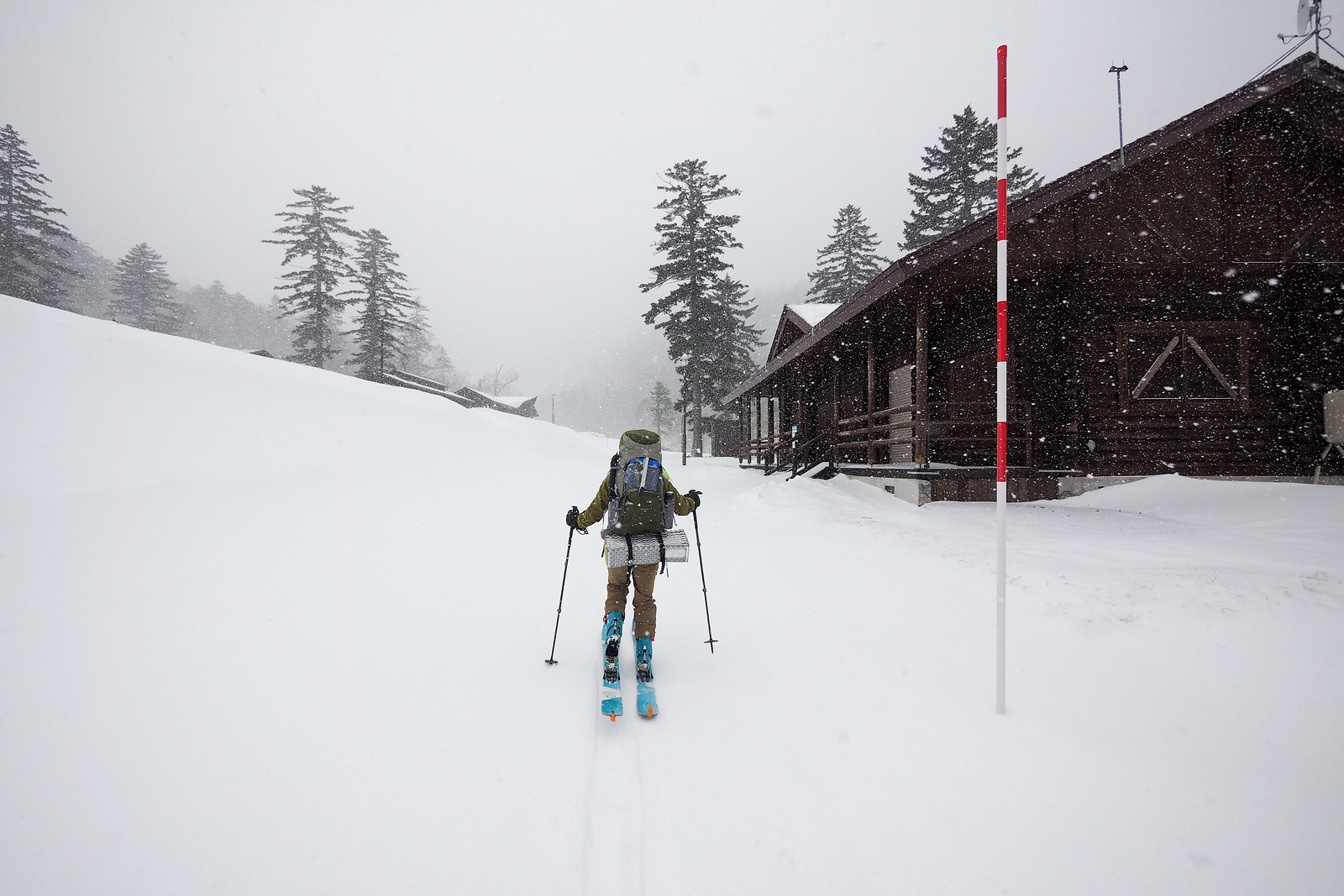
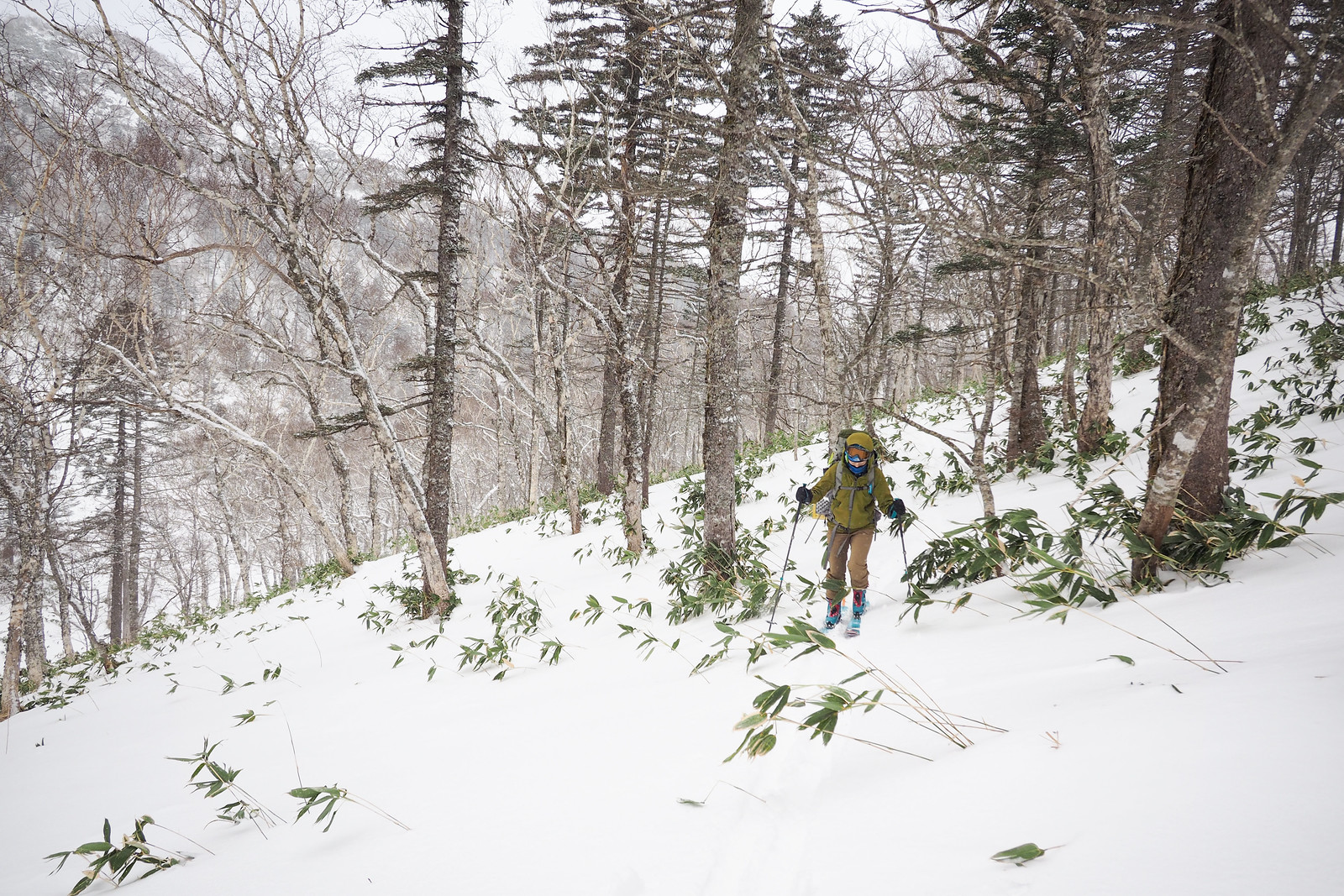
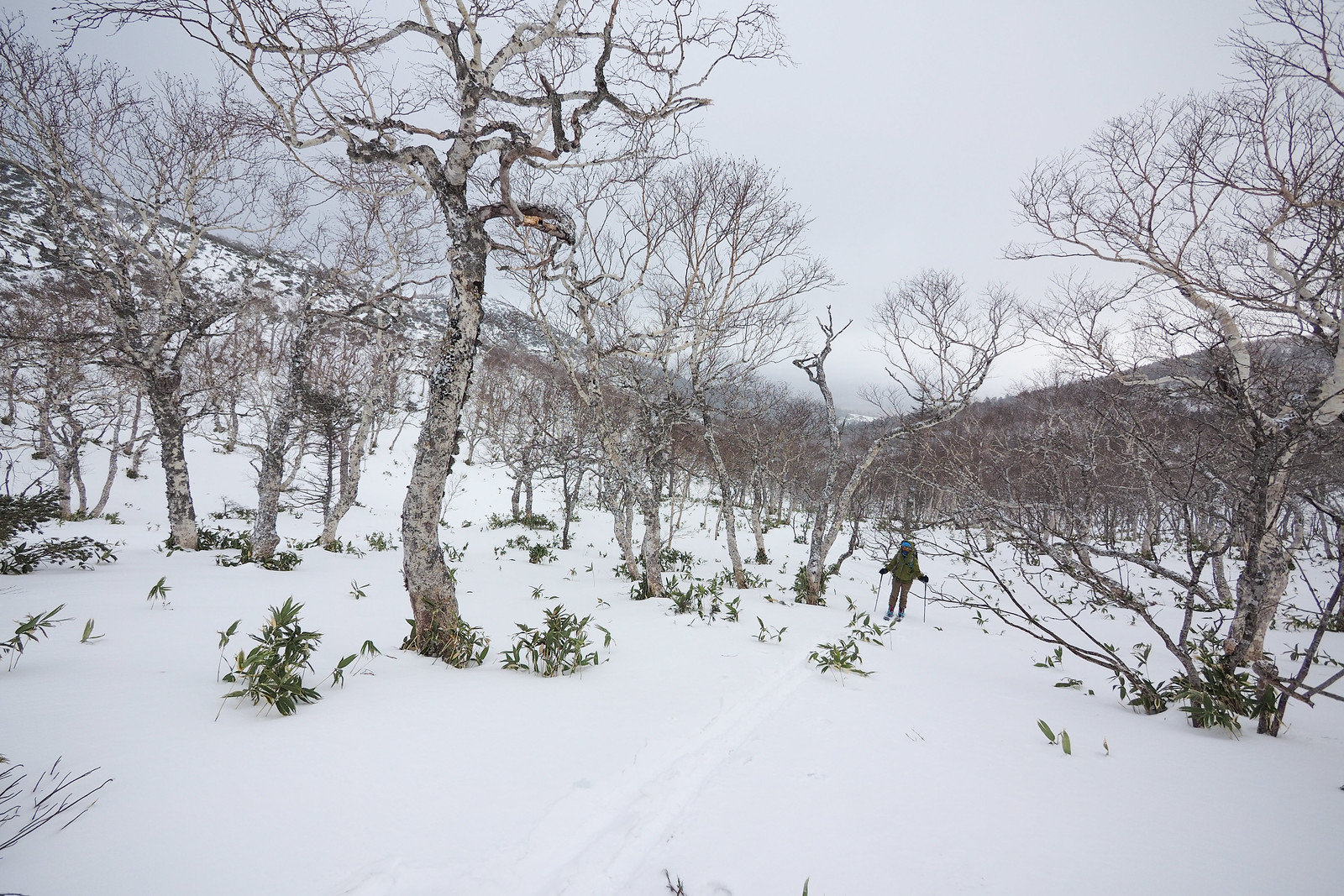
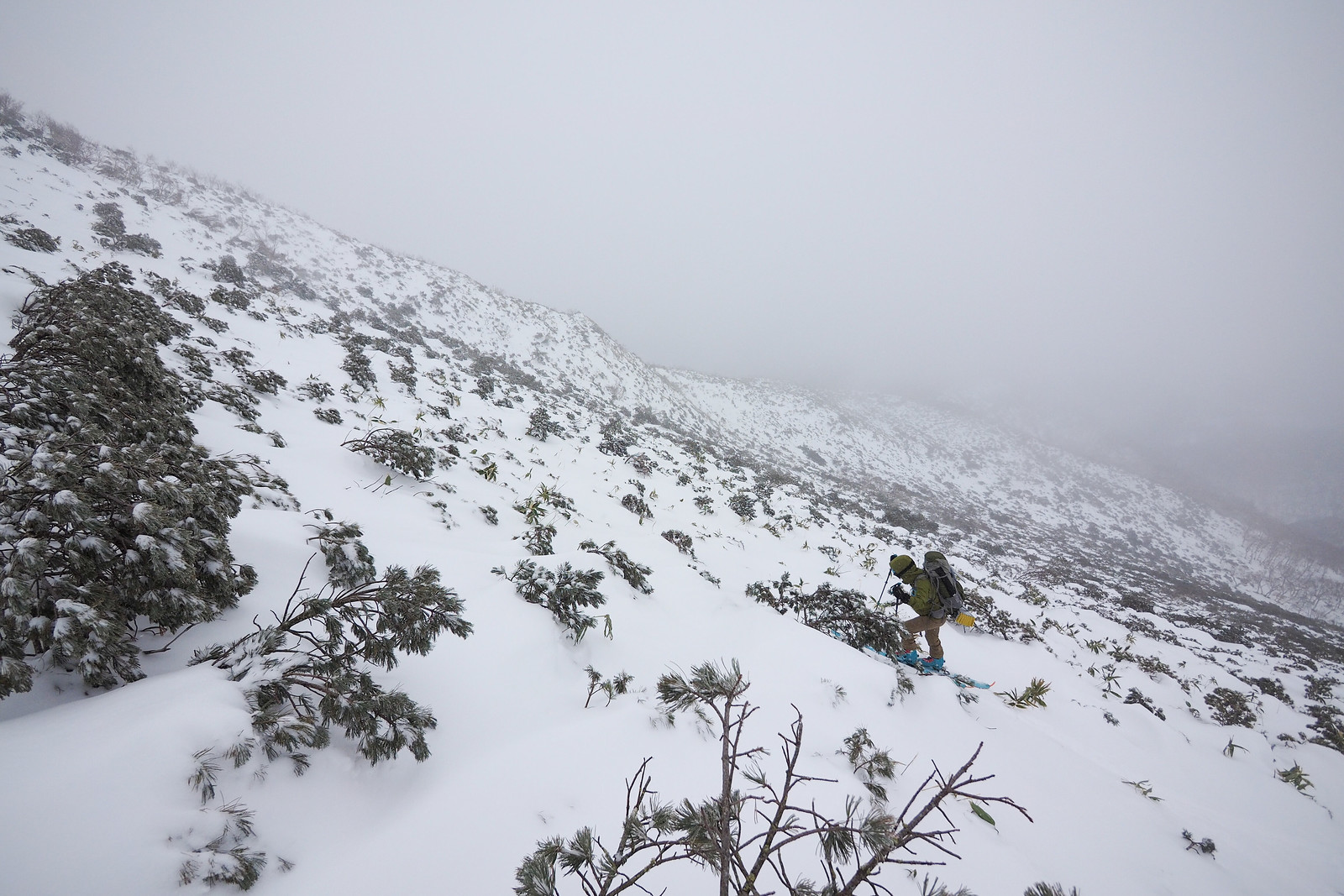
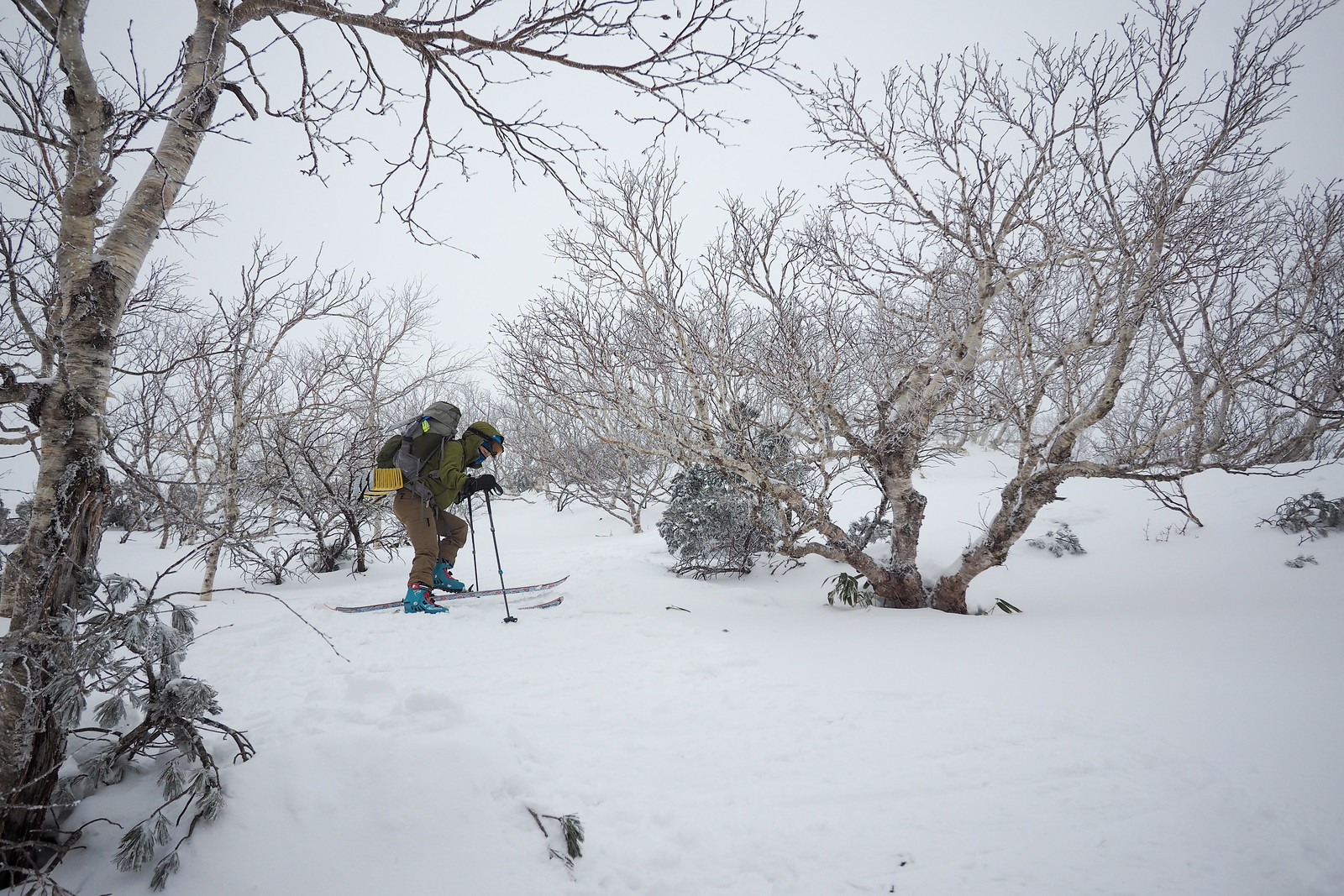
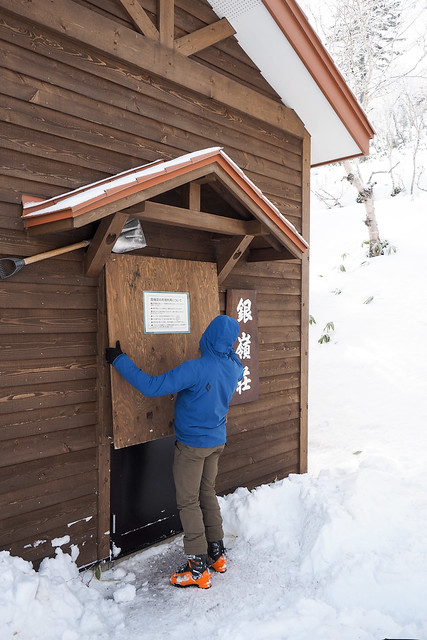
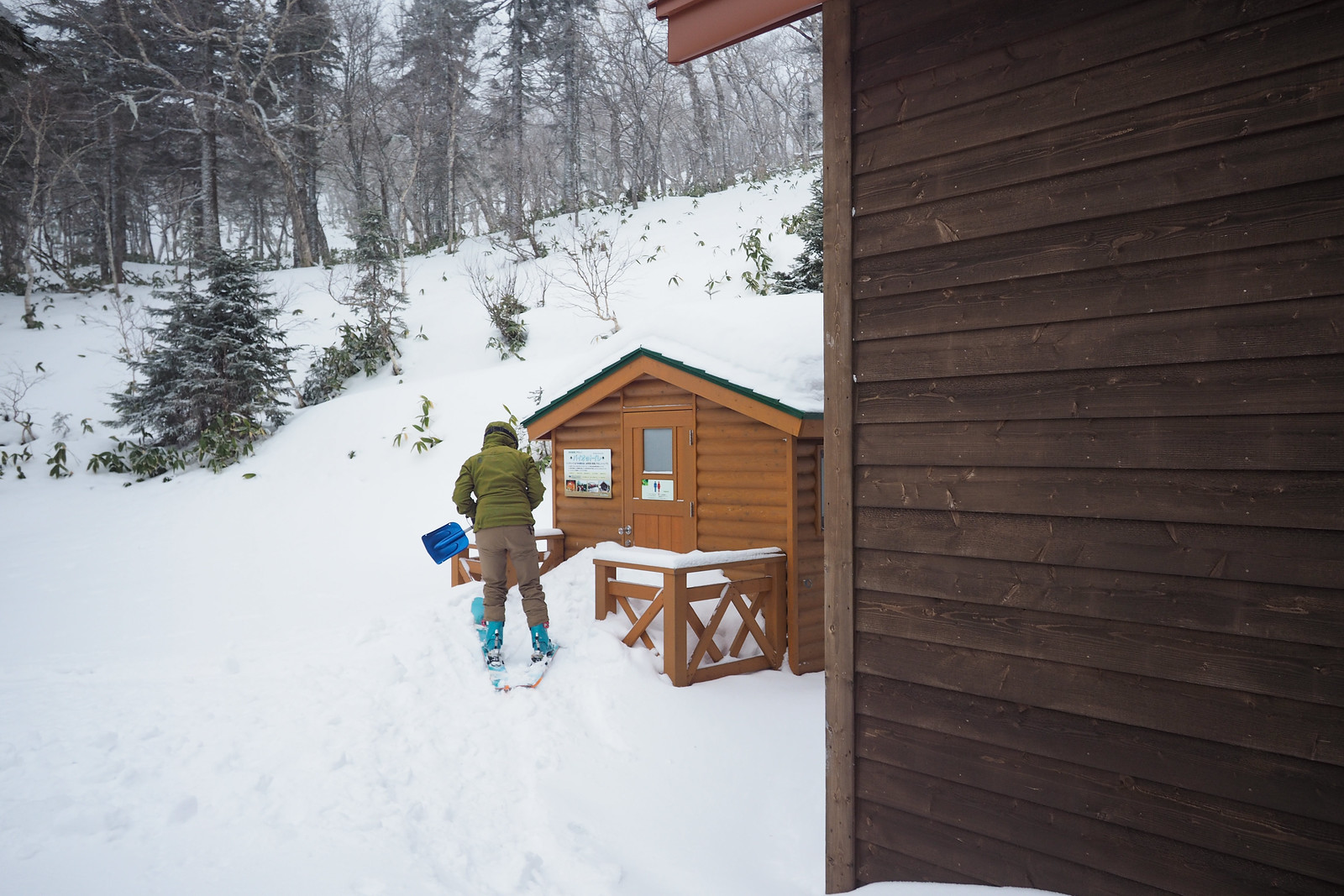
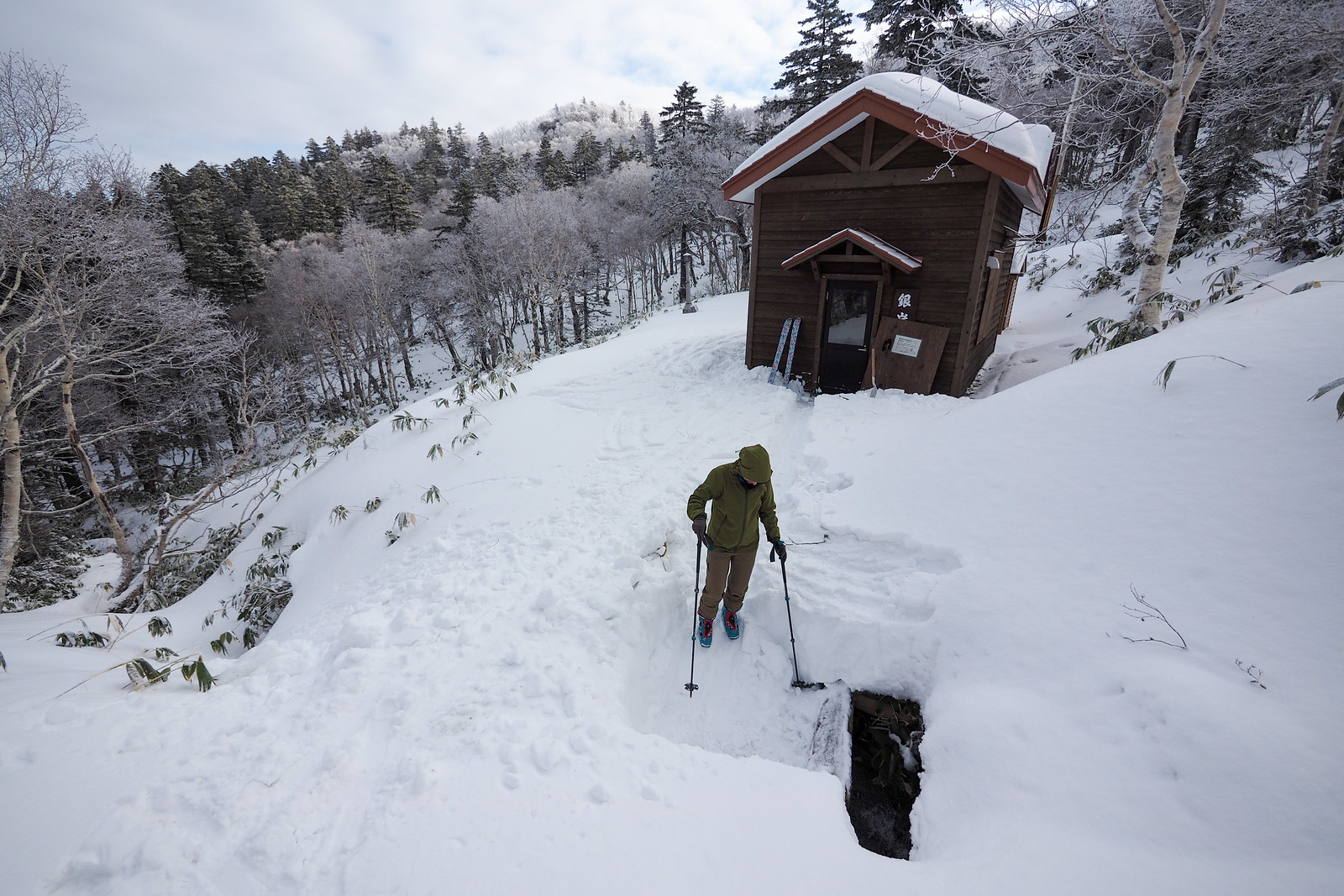
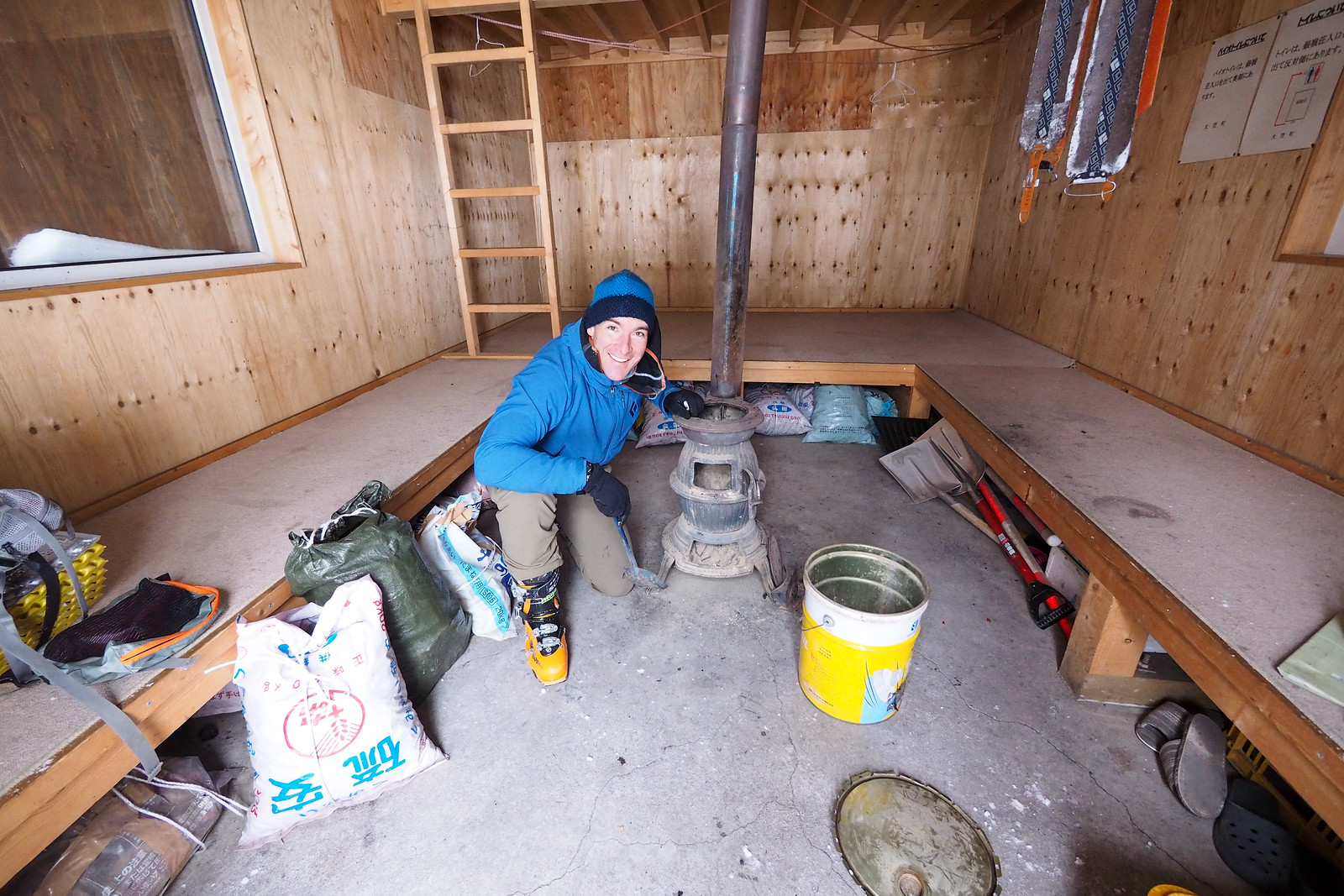
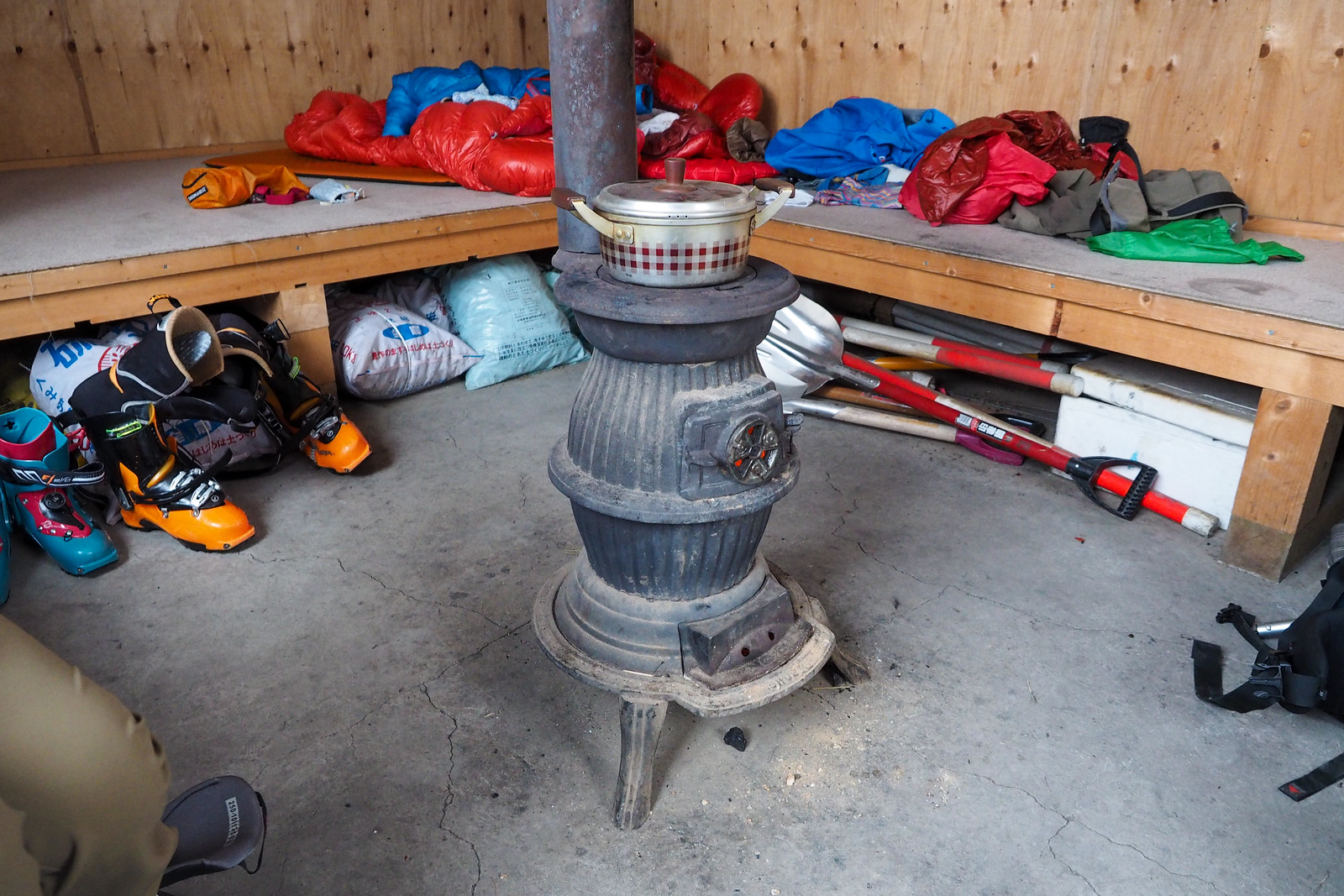

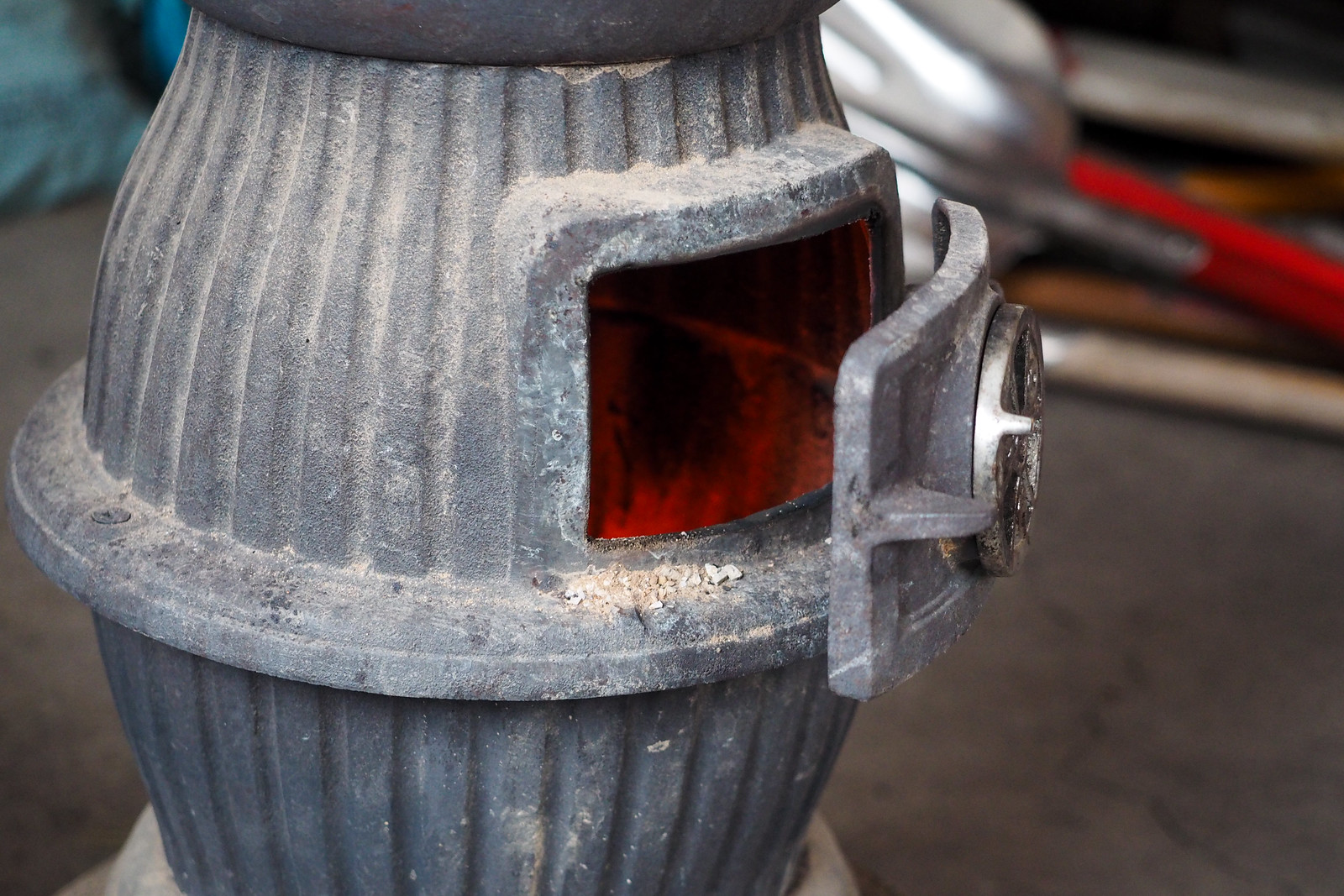
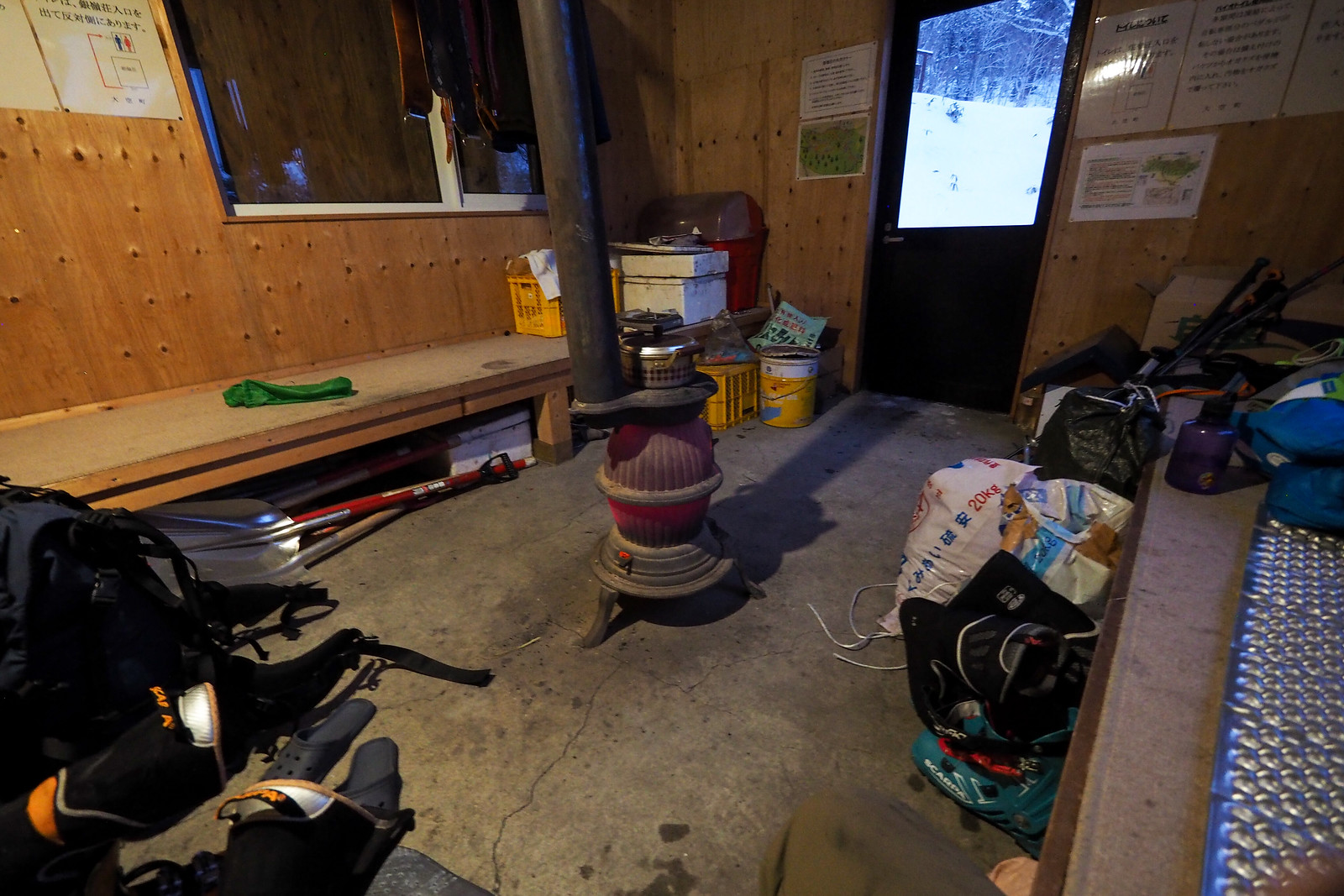
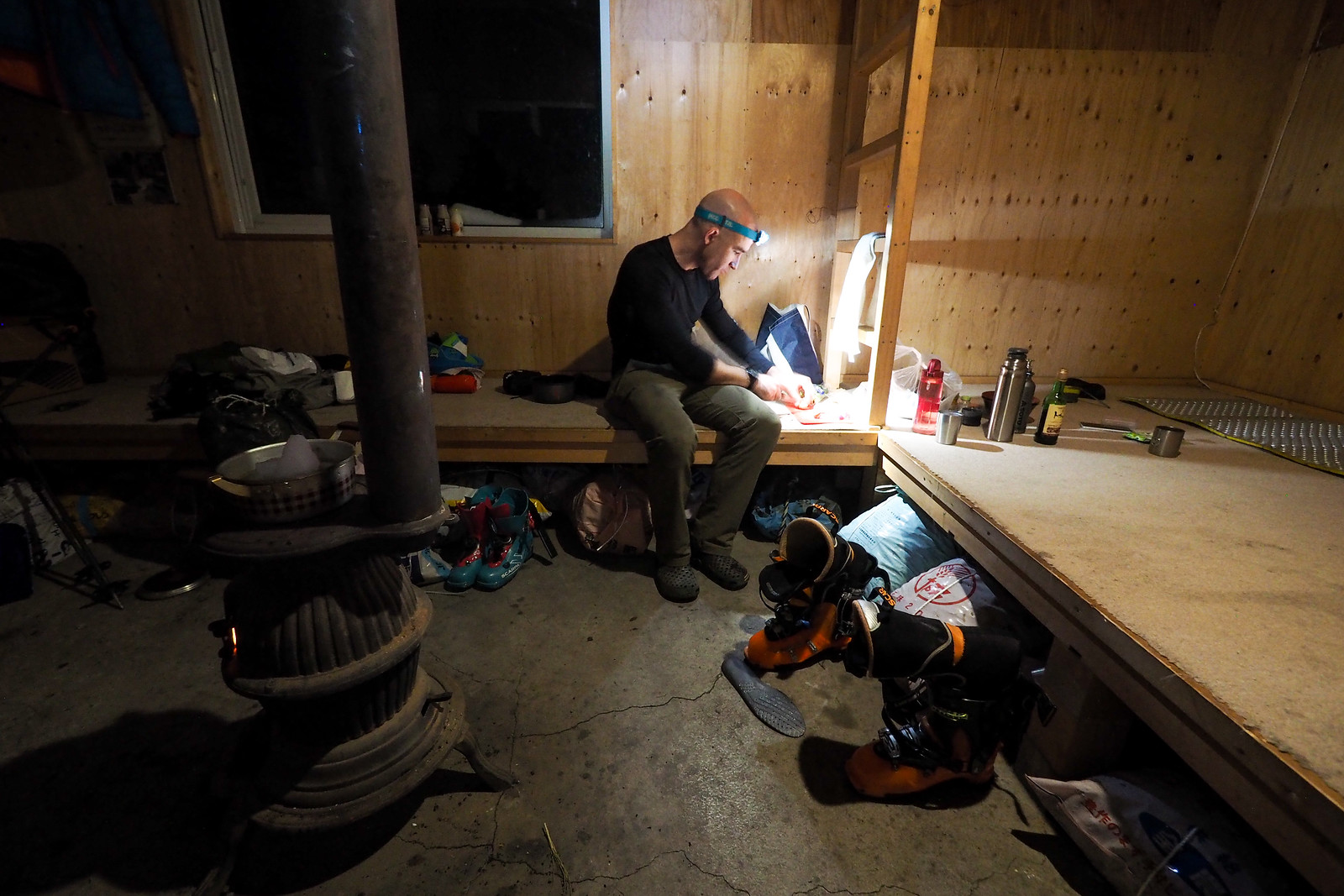

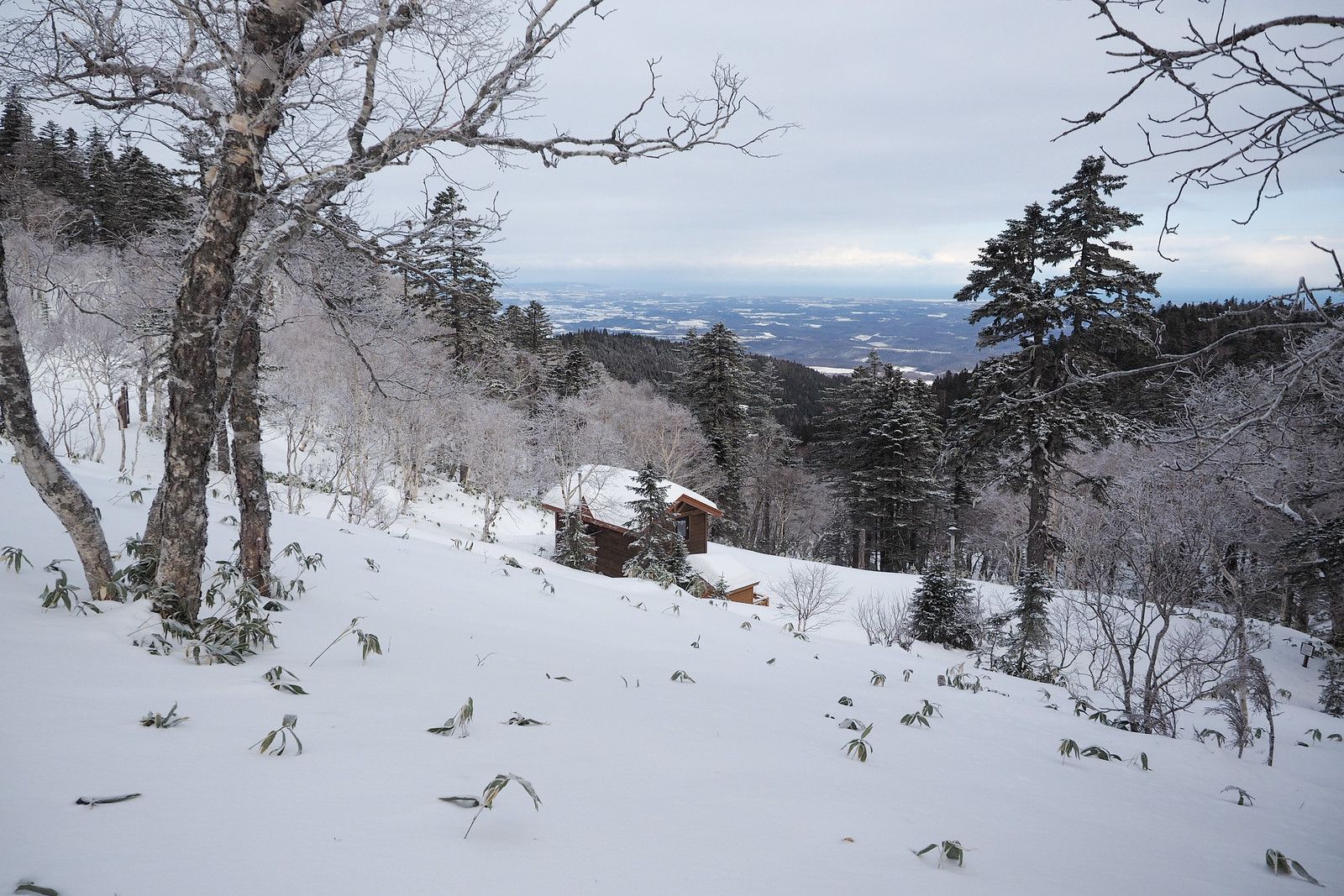
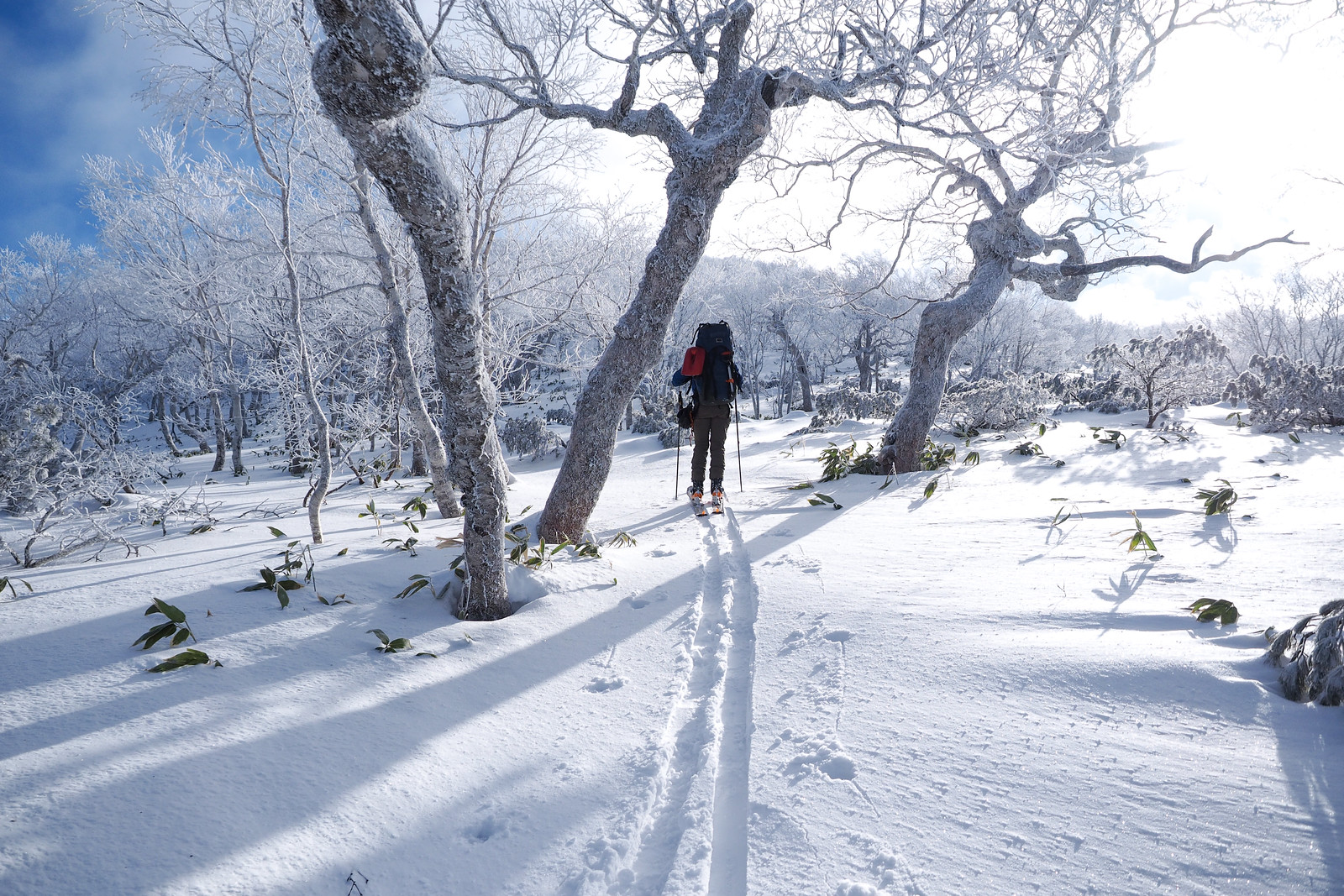
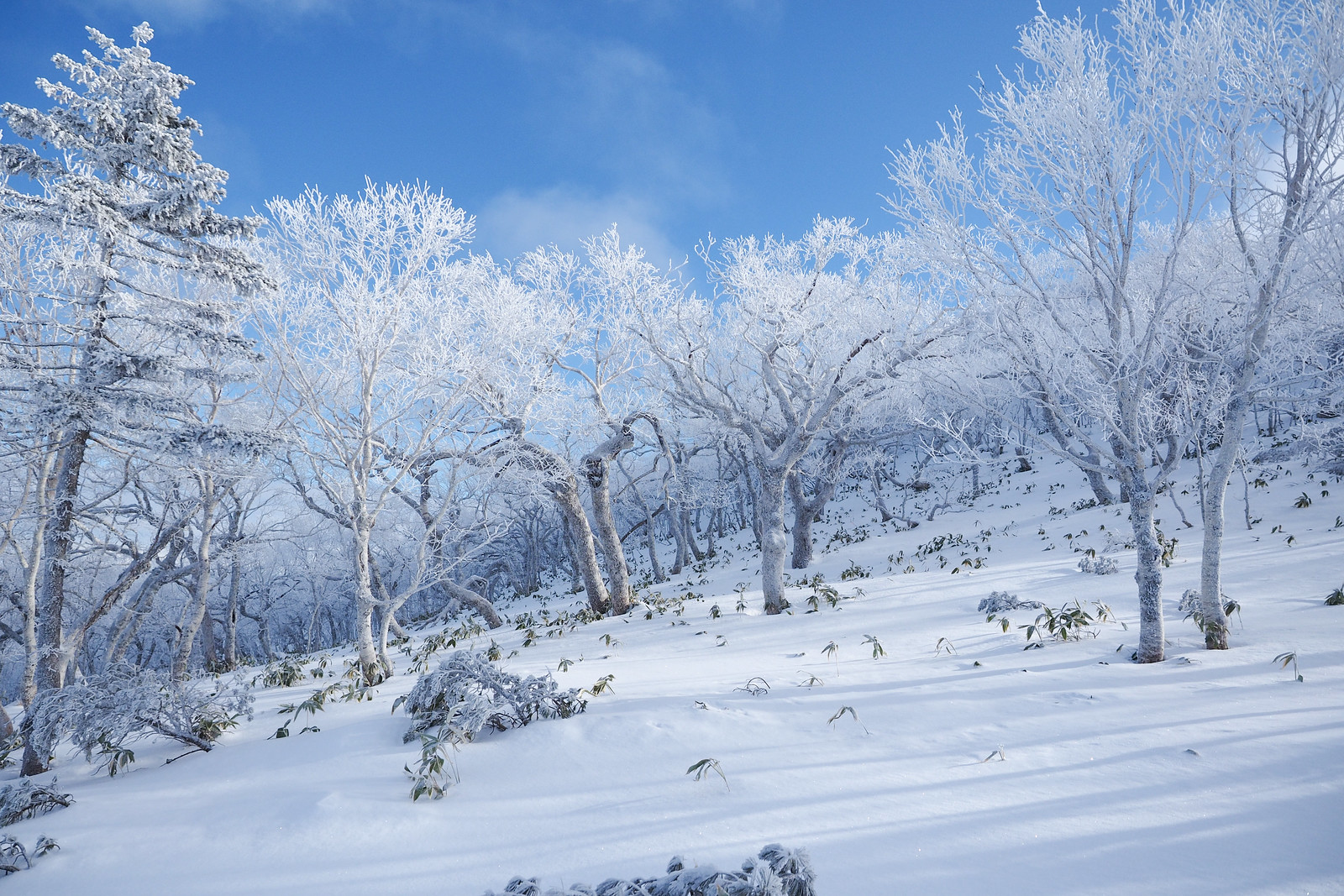
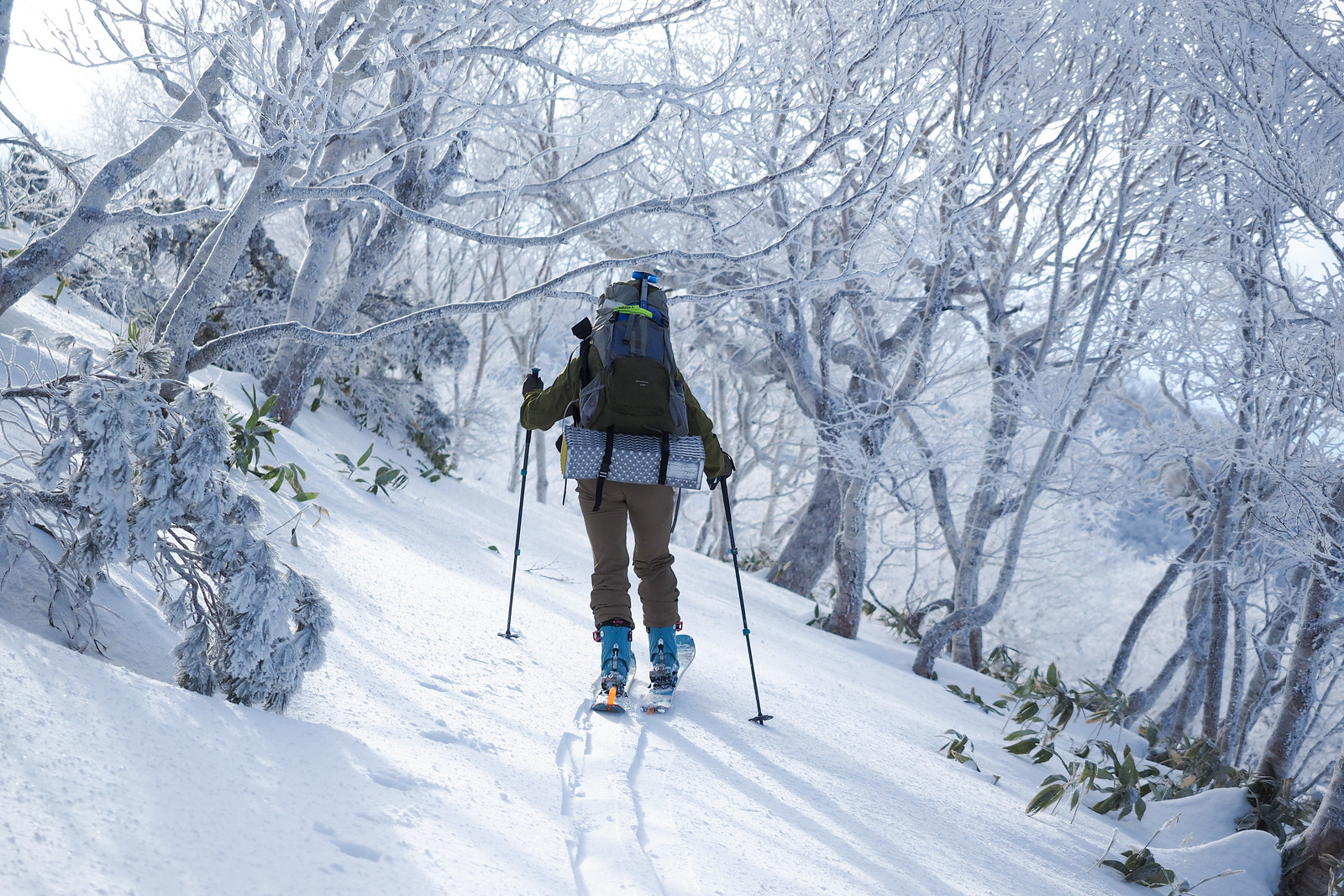
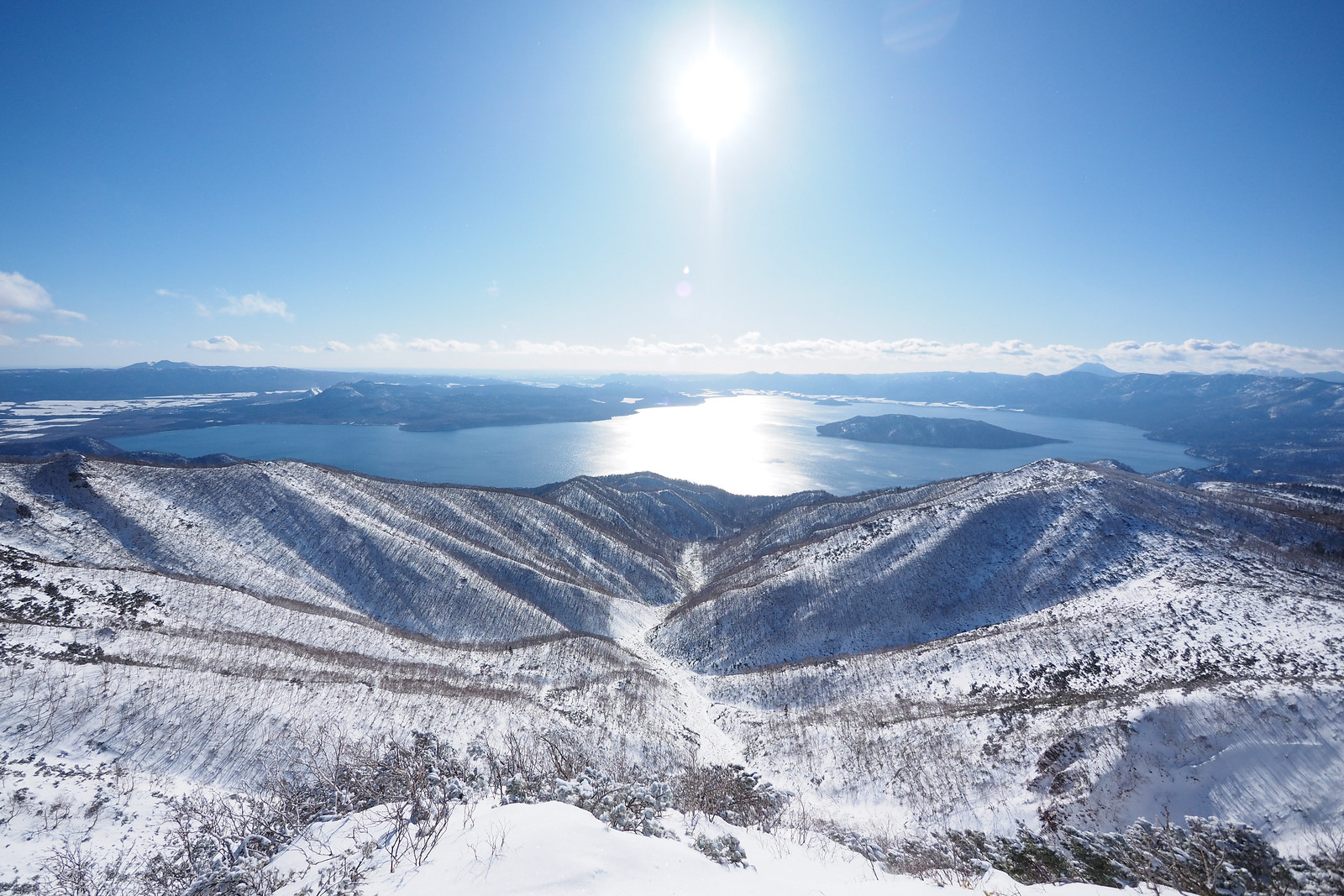
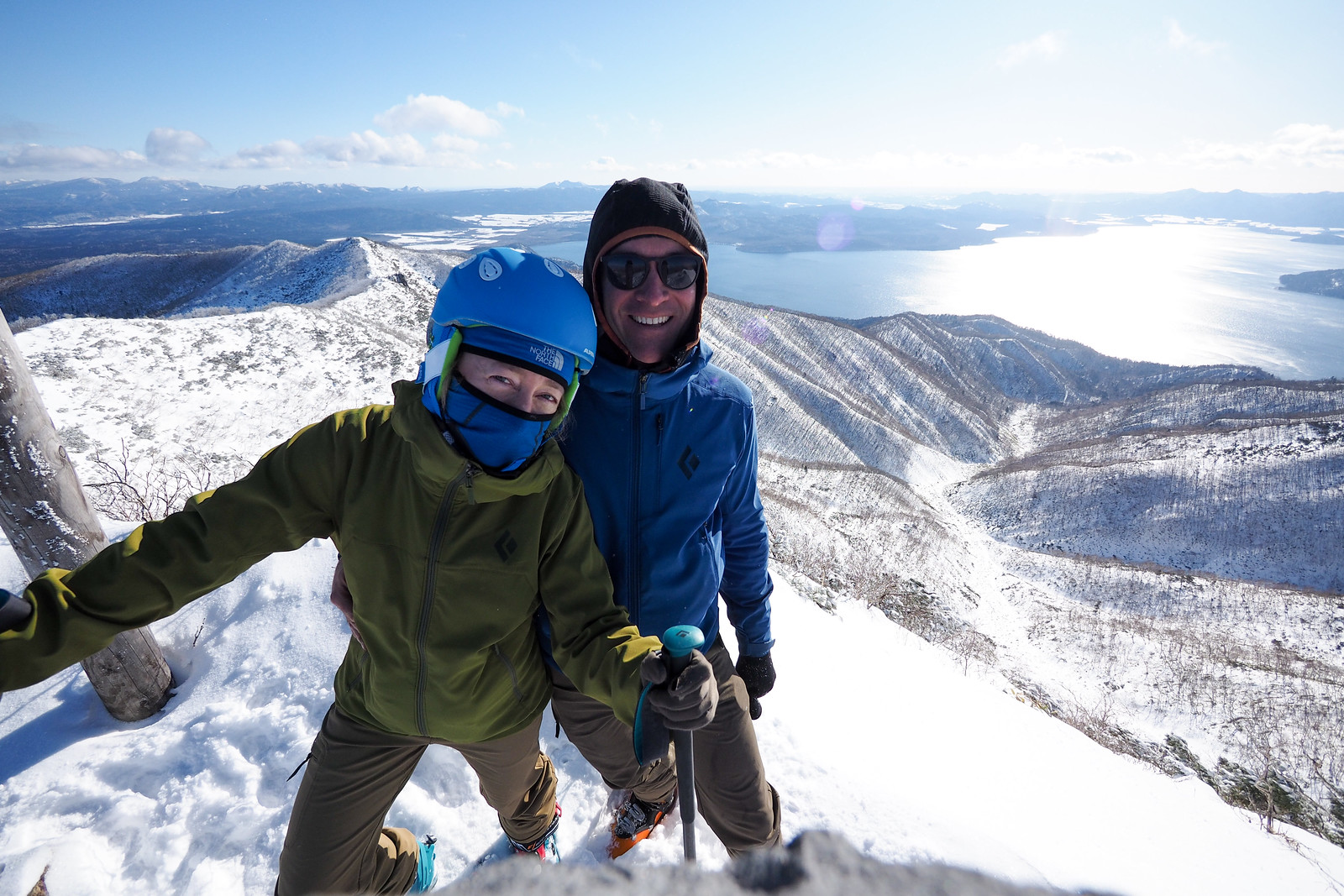
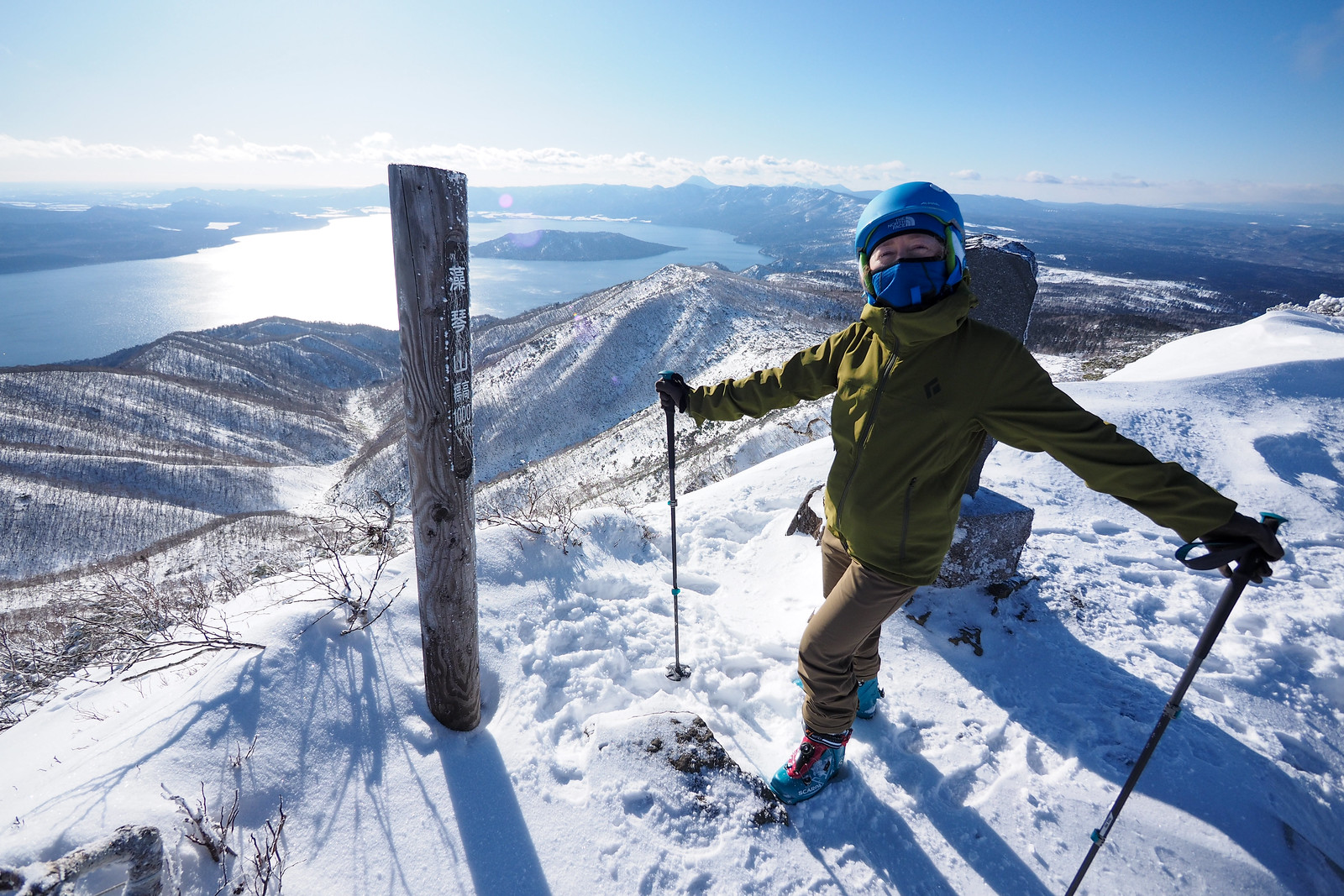
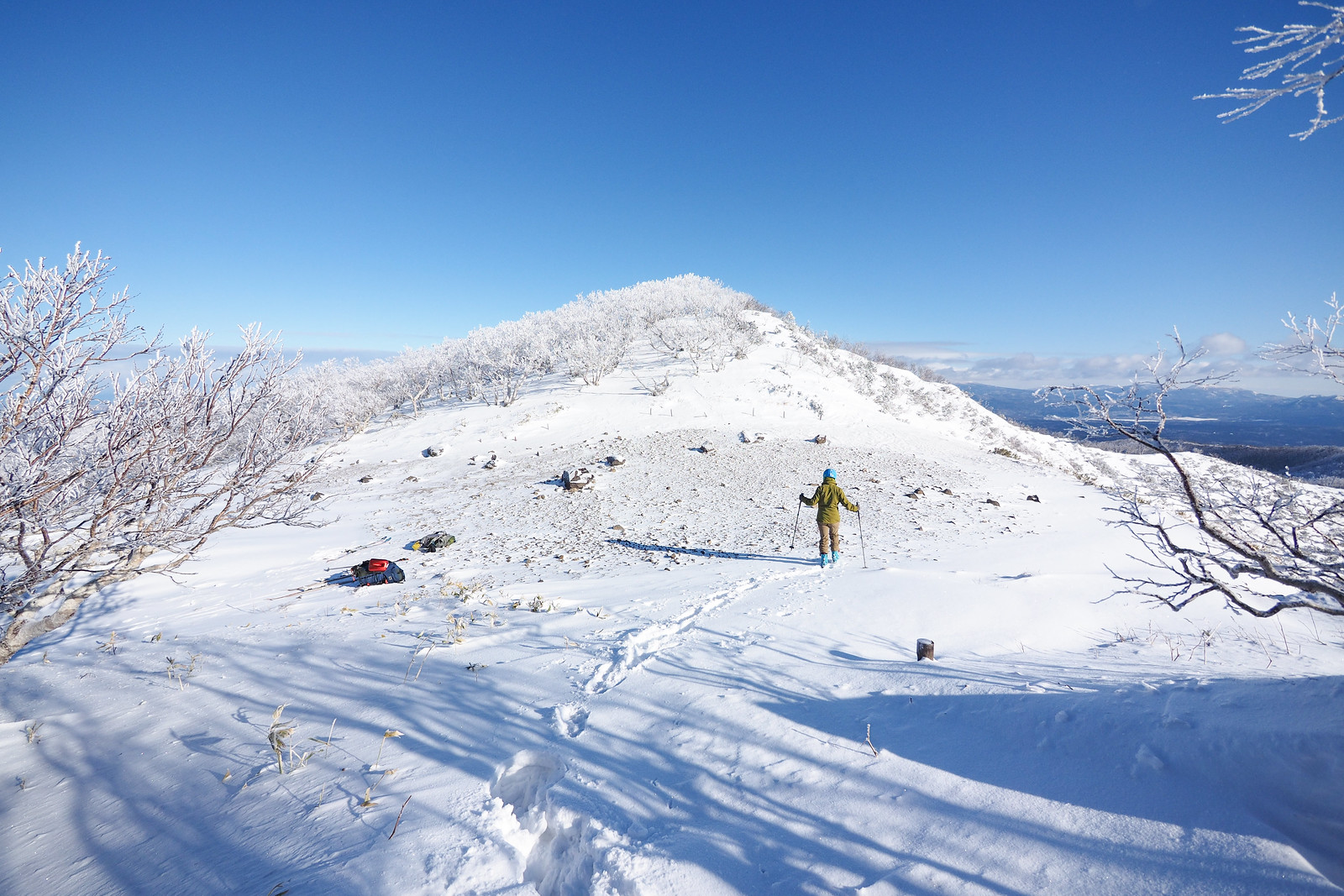
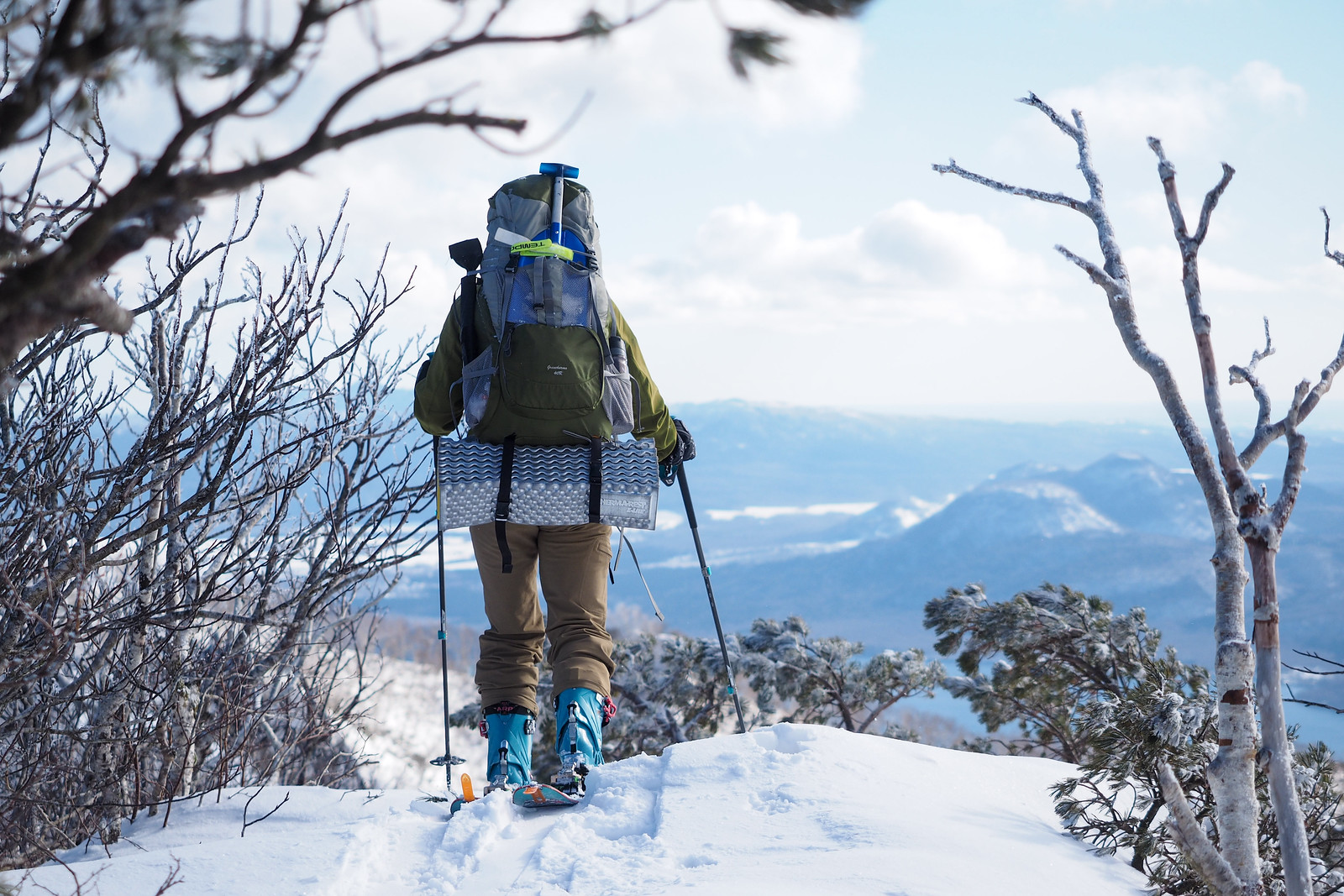
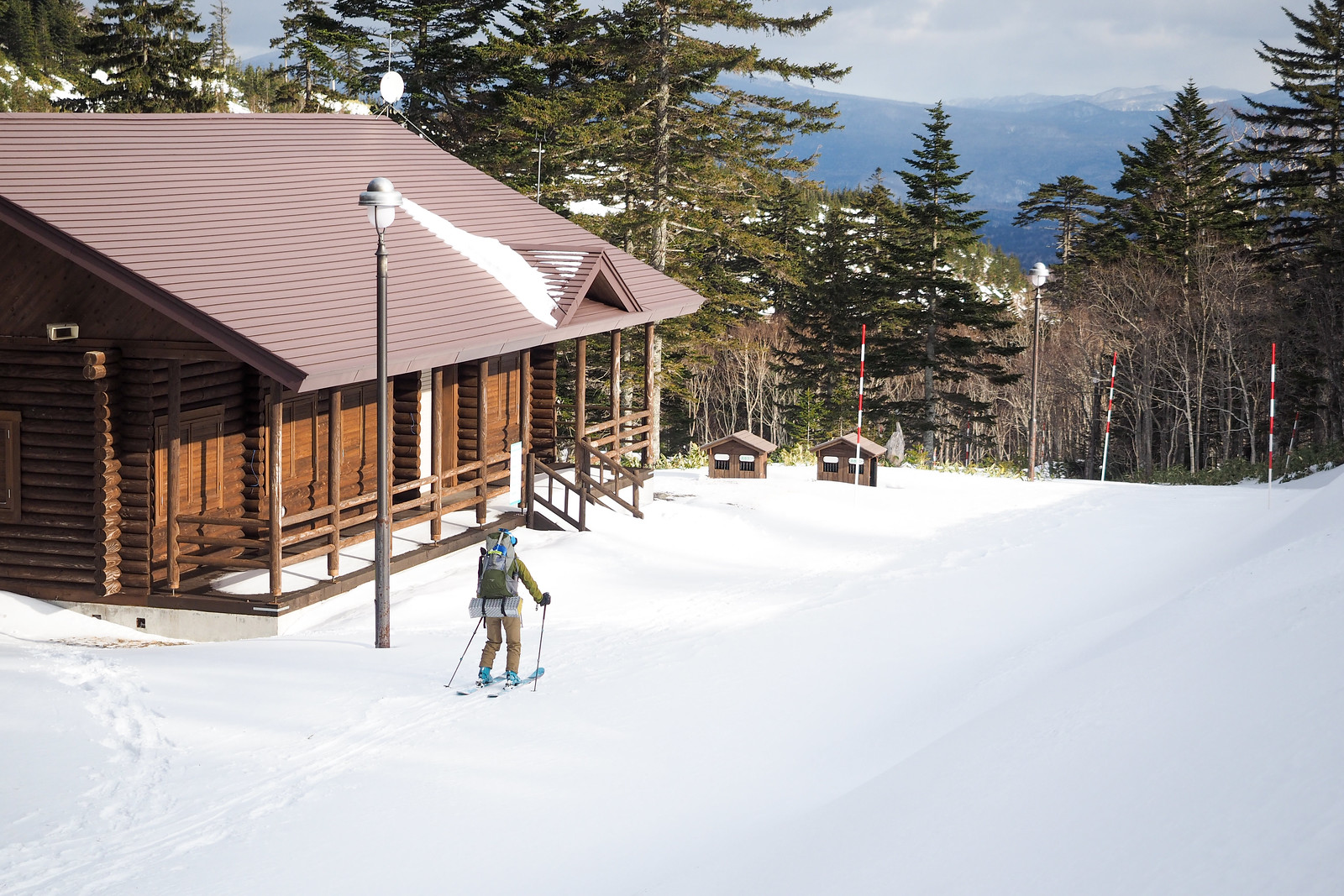







4 thoughts on “Mokoto-yama Overnight Ski Tour”
Hi Rob,
Just a quick note to thank you for sharing this route. We have been to Mokotoyama on the 8th of feb on a sunny and cold day and it was an absolute delight, the up route is absolutely stunning with on your left the frozen Kussharo Lake and your right the Shiretoko Peninsula where you can guess the ice drifting on the sea surrounded by beautiful trees covered in snow shaped by the wind blow. This ascent is short and easy with c: 500m elevation.
the descent was gorgeous with pure, dry, and fluffy powder.
Thank you for the feedback Quentin! So happy to hear you got the great views and powder that we love so much about that peak.
hello guy’s !
is there other intersting route for backcountry sking in this area ?
if yes, could you recommanded us any hostel or guesthouse for stay around 1 week ?
thank’s a lot
Hey Eric, your best bet in this area would be further east on the Shiretoko Peninsula. Take a look on the overview map (https://hokkaidowilds.org/ski). We stayed in the Shiretoko Village Hostel, it was nice.